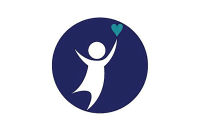Making the grade: Schools strain under pressure of misguided expectations
By Julia Merchant • Staff Writer
Much like a band-aid on a kid’s scraped elbow, No Child Left Behind was put in place to mend an educational system many claimed was in disrepair. An increasing number of critics, however, are questioning the effectiveness of the act as a permanent fix for the problems plaguing America’s schools.
No Child Left Behind, in its inception, was lauded as a way to make sure all students in the U.S. — poor or rich, white or minority, regardless of IQ level — were receiving the same level and quality of education. A standardized test was put in place at the end of third through eighth grades, as well as 10th grade, to assess what children had learned over the course of the academic year. The tests measure a school’s Adequate Yearly Progress, or AYP, and a certain percentage of students from all groups must meet that standard.
The idea of an assessment was, and still is, a good and necessary thing, say many educators. John Sanderson, principal of Central Elementary School in Waynesville, says the assessment helps keep track of populations that had previously fallen below the radar in many instances.
“I think that nationwide, the perception, if nothing else, was that there are certain groups in our nation being underserved,” Sanderson said.
“I think it is very wise for the state and federal government to track Hispanic, poor, and children with disabilities. They tend to be forgotten in Western North Carolina in particular,” said Bill Nolte, associate superintendent of Haywood County Schools.
Related Items
But while at first glance the idea of a standardized test may appear simple, the issues NCLB presents are far more complex. Tied to the end-of-year assessment are things like funding, perceptions of school quality, conflict with a student’s unique learning style, and intense pressure for kids to do well on a single, defining exam.
“I do think that as that law has played out over the years, it’s created unrealistic expectations for schools and really for children,” Sanderson says.
Kathy Norris, a Jackson County parent and educator, worries that too few parents are aware of the effect of NCLB on their children.
“In the media, they make it sound like it’s working, but they don’t hear the true stories about it,” says Norris, who serves on the Jackson County PTO and works as a transition coordinator for exceptional student services for schools on the Qualla Boundary.
Standardized Testing
It all comes down to bubbles.
After a year of preparation, everything a child has learned is boiled down to a series of questions, an end-of-course multiple-choice exam, which will take them just a few hours to complete. How students answer these questions determines whether the child has mastered enough subject matter to have adequately completed a grade.
A standardized test has innate problems, say some educators. Using a test that only covers two subjects — math and reading — can cause other subjects to be left to the wayside and encourage a narrow form of thinking.
“When you’re spending so much time worrying about whether students can bubble in tests, you don’t worry about enrichment,” says Kevin Norris, Kathy’s husband and a gifted education specialist at Cherokee High School. He also says the tests fail to measure critical thinking ability.
Sanderson worries that standardized testing, in its limited form, isn’t an accurate depiction of a child’s academic ability.
“I think the idea of using one test for every single child to somehow measure their ability or performance is really not going to give you very accurate results,” he said. Too many factors come into play to make a single test a reasonable way to determine a student’s overall ability.
“Isn’t there such a thing as having a bad day on the day you take the test?” asked Sanderson.
“You’re taking a snapshot of a kid on one day,” agrees Kevin Norris.
How each child performs also affects how the school as a whole is graded. Students are grouped into subgroups based on a variety of factors — grade level, race, socio-economic status, special needs, gender, etc. If one subgroup fails to pass a certain number of students, the entire school fails. The school is required to mail letters to all parents denoting the fact that the school failed to meet federal standards. This gives parents an incorrect perception of the actual number of students who didn’t pass the test, says Nolte.
“I don’t have a problem with standardized testing — I have a problem if it’s the only measure in which a school is judged,” he said.
Grouping kids together and making them take a uniform test, some educators say, takes the focus off the child as an individual.
“With NCLB, there’s no consideration that year to year, classes will have different children. It doesn’t track yearly progress or look at individual students from year to year,” says Nolte.
For example, a student with limited skills could have made significant progress over the course of a school year. The student could have started on a third-grade reading level and advanced to a sixth-grade reading level. But if the student is in seventh grade, that matters little — they still failed their end-of-year exam.
“It’s a completely inaccurate way of measuring,” Kevin Norris says.
Moreover, children have different styles of learning.
“It’s not fair to have everyone tested the same way when their learning styles are different,” says Sheila Easterling, a fourth-grade teacher at Central Elementary.
Trying to test every student as if they learn the same way detracts from the diversity in education, Kathy Norris says.
“It would be lovely in a world to have everybody in the same level, but then we’d be a bunch of robots. I believe in multiple intelligences — that’s what makes life interesting,” she said.
One of the goals of NCLB is to have all students passing the end-of-year test by 2014. This aspect of the act in particular ignores the diversity of children’s learning. Nolte likened the proposal to the story of Lake Wobegon, a fictional place where every child is above average.
“If you apply that notion to NCLB, there’s a design flaw,” Nolte says. “One hundred percent is not feasible.”
Sanderson agrees the principle is innately flawed. He says that in reality, at all times, half the population will be above average and half will be below average. Taking away the idea of an average and suggesting that all children test above a certain level “is kind of a ludicrous thought,” he said.
Furthermore, the results garnered from the test are difficult to apply to an individual child.
“We get virtually no feedback. We don’t know exactly what the kids missed, exactly what items. We can’t ever see that test again,” Sanderson said. He said schools only get very generalized results and a very general picture of how a particular student did.
“You get a score of how they performed, and that’s it. You can’t really take that score and teach them,” Kathy Norris agreed.
“That’s one of the greatest flaws in how the testing and assessment work,” said Sanderson.
Pressure in the Classroom
When teachers are asked about the biggest change they’ve noticed in the classroom since the implementation of No Child Left Behind, their answers contain a common word — pressure.
With so much riding on the standardized test at the end of the year, teachers are feeling the heat to make sure their classes are prepared. That can come at the expense of other activities.
“When I first began teaching, there was a lot more freedom to do extra things in the classroom. Now it feels that, because of the pressure of NCLB and the growth we have to produce by the end of the year, there’s no time for many of the extras,” said Easterling. “We have to be hyper-focused on the curriculum.”
Though it hasn’t yet happened at Central, Sanderson said he’s heard that other schools in North Carolina are cutting back on science, physical education and field trips to devote more time to prepping students for the end-of-year exam.
“They’re feeling the pressure. If they don’t perform well, they’ll be ridiculed,” he said.
Sanderson said an end-of-year test isn’t necessarily a bad thing, but that teachers can get so focused on it that they are in danger of losing sight of what they’re really supposed to be accomplishing with the test — assessing what students know.
The pressure to perform extends to students, too.
“I had kids that would work so hard and make gains and do well, and then when testing comes around, they’d be in tears,” says Kathy Norris. “I worry about the emotional effect it has on students.”
“Children feel test anxiety,” says Sanderson. “We’ve had children before getting sick to their stomachs.”
For children so young to feel such a level of stress is detrimental to their health and development, says Easterling.
“Seeing the kids — they’re too young to feel the pressures that adults are feeling,” she said.
When a child is a member of a subgroup that fails to pass — causing the whole school to fail to meet federal requirements — they feel blame and take it to heart.
One example is the subgroup of children with special needs, who are expected to take either an identical test as their grade-level peers or a slightly shorter test with similar material. There is debate over whether children with special needs should be required to test on material for their grade level, since their learning needs and capacities can be highly individualized. Little thought is given to that, however, when a school’s scores come out and the special needs subgroup causes the school to fail.
Kathy Norris, who worked with children with special needs for years before taking an administrative position in Cherokee schools, says she has heard parents say: “We didn’t pass because of special education.”
“There’s a lot of pressure tied to that,” Kathy says.
Kevin Norris pointed out that — particularly in the special needs subgroup — the children are already dealing with isolation and “being shunned by the rest of the population,” making the added pressure and blame even harder to digest.
Though the pressure to perform can be great, Easterling notes some positive changes in the classroom as a result of NCLB. For one, she says there’s more accountability for teachers.
“It makes us toe the line more. We’re interested in our professional development and how that is going to help us develop and improve as teachers.”
Additionally, the intense focus on reading and math has forced teachers to become more creative in integrating other subjects.
“We learn to teach more creatively by combining social studies with language arts and science with math, so that we’re actually accomplishing two curriculum goals at the same time,” Easterling says.
Funding
A school’s motivation to comply with No Child Left Behind standards is driven in large part by dollars.
Specifically, a type of federal funding known as Title I is given to a school district based on the percentage of underprivileged children (kids on free and reduced lunch) within the system. Title I dollars account for a large part of a school’s federal funding, especially in more rural school districts like those in Western North Carolina. Title I funding is closely tied to NCLB.
For example, if a school fails to meet federal standards (known as Annual Yearly Progress, or AYP) for two years, they must offer students “school choice,” or the opportunity to go to another school in the district that does meet federal requirements. Even though only a slim margin in one subgroup may have failed, the school must offer the school choice option to every student — including the ones who are excelling at the school. Moreover, the school must use their Title I dollars to pay to bus kids to the school of their choice.
Haywood County Schools spent $26,000 last year bussing kids from Waynesville Middle School (which failed to meet AYP standards) to Bethel and Canton middle schools, according to Nolte.
Nolte, who is frustrated by the requirement, used his daughter as a hypothetical example of why he disagrees with school choice.
“Why should we be spending your tax dollars to bus my daughter, who performs fine, when we could spend those tax dollars on helping kids that are behind?” he asked.
If the goal of NCLB is truly to improve performance of the kids who aren’t doing well, Nolte questions whether the $26,000 spent on bussing children — many of whom were excelling academically — could have been put toward programs to help the subgroup who failed the test.
“I think it’s just crazy to put a high-performing student on a bus and send them to another school under the guise of poor performance. Don’t set money aside and make schools spend it on something that has nothing to do with the subgroup that did not do well,” he said.
Kevin Norris brought up another problem with school choice. As the kids are bussed to other schools, those schools grow, causing classrooms to bulge and student-teacher ratios to go up. As a result of larger class sizes and stretched teachers and supplies, the quality of that school goes down, Kevin said.
Central Elementary experienced the negative effects of school choice first-hand. All the schools in Haywood County share from the same pot of Title I money, and when Waynesville Middle School was put on school choice, Central saw some of its Title I funding re-directed to bussing students at the middle school. As a result, the elementary school was forced to eliminate a successful tutoring program.
After two years of not meeting AYP requirements, besides offering school choice, a school must redirect 30 percent of the Title I dollars it gets to teacher training. Outside professional development groups come in and offer workshops to teachers at the school. Though Nolte sees advantages in professional staff development, he questions whether — like school choice — the mandatory dollars going toward teacher training are truly where the money should be spent. Instead, he says the money may be better spent on the subgroup that failed the test.
“Professional development and education is great,” agrees Kevin Norris, “but it doesn’t help any if you have all these problems and barriers.”
Kathy Norris questioned the effectiveness of teacher training without any sort of follow up.
“If you’re giving them good training and quality, are you supporting them in the classroom?” she asked. Instead, Kathy suggested that some of the teacher training funding might go to directly affect class size and more supplies for teachers.
Nolte pointed out the questionable logic in some of the NCLB funding.
“The means of fixing the problem is disconnected from the problem itself,” he noted.









